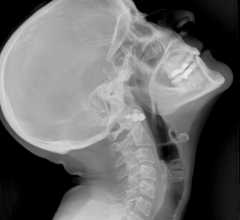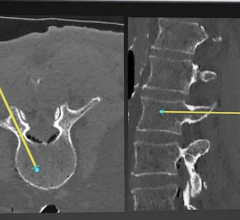
21-month-old girl with rickets and vitamin D level of 5 ng/mL. Left: Long-leg bilateral lower extremity radiograph. Right: Edited radiograph of right knee shows cupping (curved dotted line), fraying (arrowheads), and increased physeal widening (double head arrow) in distal femur, with similar findings in proximal tibia and fibula (not annotated), all consistent with rickets; radiograph shows no signs of CML. All eight radiologists correctly interpreted radiograph as showing rickets with moderate or high confidence.
July 7, 2022 — According to ARRS’ American Journal of Roentgenology (AJR), rickets and classic metaphyseal lesions (CMLs) exhibit distinct radiographic signs, and radiologists can reliably differentiate these two entities.
Noting both high interobserver agreement and diagnostic performance for differentiating the two entities in this 7-center study, “recognition that CMLs mostly occur in children younger than 6 months and are unusual in children older than 1 year may assist interpretations,” wrote corresponding author Boaz Karmazyn from the Riley Hospital for Children in Indianapolis, IN.
Karmazyn and colleagues’ retrospective study included children younger than 2 years old who underwent knee radiographs from January 2017 to December 2018 and who either had rickets (25-hydroxy vitamin D <20 ng/mL and abnormal knee radiographs) or knee CMLs and a diagnosis of child abuse from a pediatrician. Eight radiologists independently interpreted radiographs for rickets or CML diagnoses, rating confidence levels and logging associated radiographic signs.
Ultimately, children with CML were younger than children with rickets (3.9% vs 65.7% >1 year old). The rate of false-positive moderate or high-confidence interpretations was 0.6% for CML and 1.6% for rickets. Only a single child with CML and low vitamin D received an interpretation of combined CML and rickets.
Reiterating that less- and more-experienced pediatric and non-pediatric radiologists had high diagnostic performance in differentiating rickets and CML—regardless of the presence of vitamin D deficiency, with few false-positive interpretations for these diagnoses—"findings suggestive of both rickets and CML should be viewed as indeterminate,” the authors of this AJR article concluded.
For more information: www.arrs.org


 July 18, 2024
July 18, 2024 







